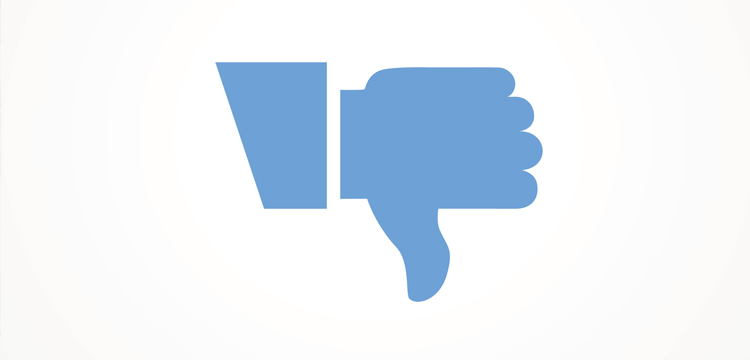The Blunders
1. Tinder's Twitter meltdown
Tinder, the well-known mobile app, was caught up in a tweetstorm after journalist Nancy Jo wrote an article accusing Tinder of being nothing more than hook-up app and criticised it for creating short-term and unstable relationships. Tinder didn't take well to the criticism and foolishly went straight to Twitter to vent their anger.
The lesson:
Firstly, whenever you respond to criticism always do it calmly. Secondly, it is so important to know when to respond to criticism. Tinder could have let the article slide, it certainly wouldn't have impacted their users, but because they chose to react they brought more damage and ridicule to the brand than the article ever could.
2. ESPN Analyst tweets URL to porn site
Gerry Hamilton, an ESPN recruiting analyst made a really big mistake when he didn't double check his tweet before posting it. He sent out a link to a pornography site to all his 15,000 followers and it's fair to say a lot of people noticed...
The lesson:
The lesson here is very simple. Just double check! Always have a quick look over your tweet (or status, or comment, or whatever you're posting publicly) to make sure it has exactly what you're intending to say in it and that any link your posting is going to exactly where you are expecting it to go.
3. SeaWorld's #AskSeaWorld campaign backfires
SeaWorld has faced controversy and criticism since the exposé video, Blackfish, was released in 2013 by PETA (People for Ethical Treatment of Animals). So it may not be surprising that when they decided to let the public ask them questions on Twitter they didn't get a positive response. Tweeters used the hashtag #AskSeaWorld to ask hostile questions about the treatment of SeaWorld's orcas.
The lesson:
Know your audience. Okay, okay, we guess that doesn't seem like much of a lesson. Perhaps instead the lesson is in knowing how important it is to understand how your brand is being recognised and the best way to go about repairing a reputation.
4. Nasdaq 'leaks' Twitters quarterly earnings
We have to use the term 'leaked' carefully as nothing was hacked or sourced illegally. Selerity, a firm that crawls the internet for financial data, tweeted the first quarter earnings of Twitter... several hours before Twitter intended to release them. This was bad news for Twitter as they had missed their revenue expectations and shares in the company suddenly fell by 18%.
The lesson:
It is incredibly important to remember the influence your tweets might have – and who you might hurt when tweeting! Selerity clearly never set out to damage Twitter and we're sure you'd never set out to damage anyone's reputation either but sometimes accidents can happen, especially when social posts are automated, so always keep an eye on what you're saying!
5. Coca-Cola pulls campaign after hacked into tweeting Mein Kampf
Yes, really. The soft drink giant was forced to withdraw their #MakeItHappy campaign after they were tricked into posting quotes from Hilter's Mien Kampf. Coca-Cola created an algorithm that would convert tweets into pictures of happy things; balloon animals, chicken drumsticks in cowboy hats, rock guitars with googly eyes. However, one internet troll had the idea of creating a new account @MeinCoke and set up tweets quoting Mien Kampf with the hashtag #MakeItHappy. Using this hashtag triggered Coca-Cola's twitter-bot to turn these inserts into cute pictures... like a cat playing the drums and a banana.
The lesson:
There are two lessons to be learnt from this. Firstly, never underestimate the capabilities of an internet troll and never underestimate your susceptibility to one. Secondly, Coca-Cola is not the first company to be burned by not vetting the content they were putting out there (see number 5 on our original blog) and it's understandably difficult when you've set up clever algorithms to do the work for you but it's always best practice to have a human eye scanning over the content every so often. To, you know, make sure you're not quoting Hitler.
That about wraps up the first part of our blog, focusing on some of the social media mishaps that happened in 2015. Catch up with part 2 where we look at the campaigns that really got it right.

You need to sign in or register before you can add a contribution.